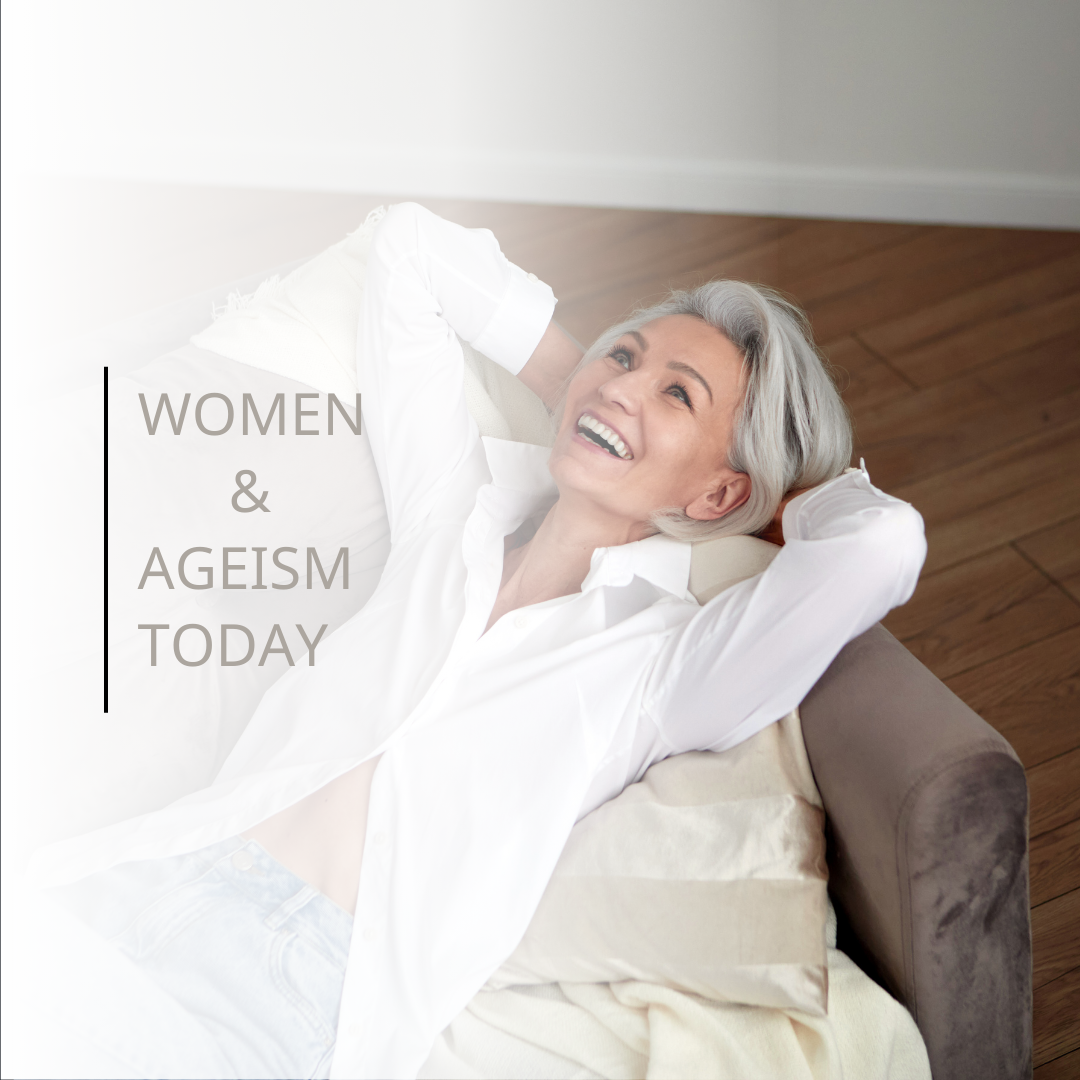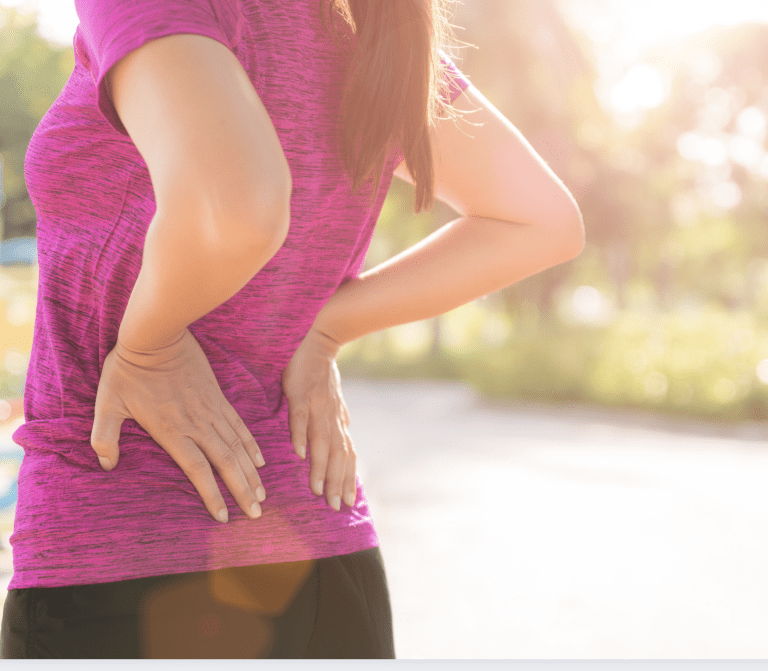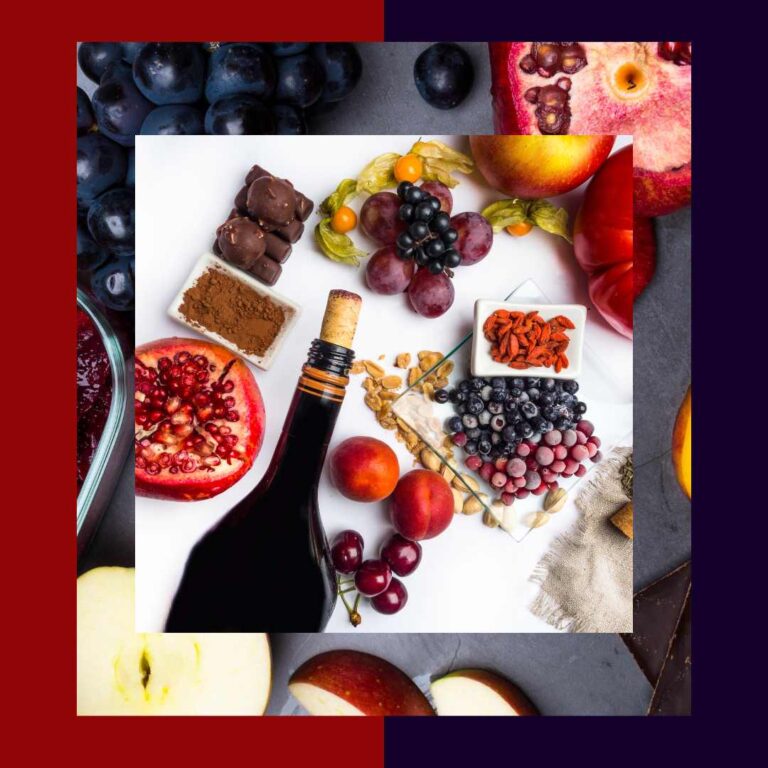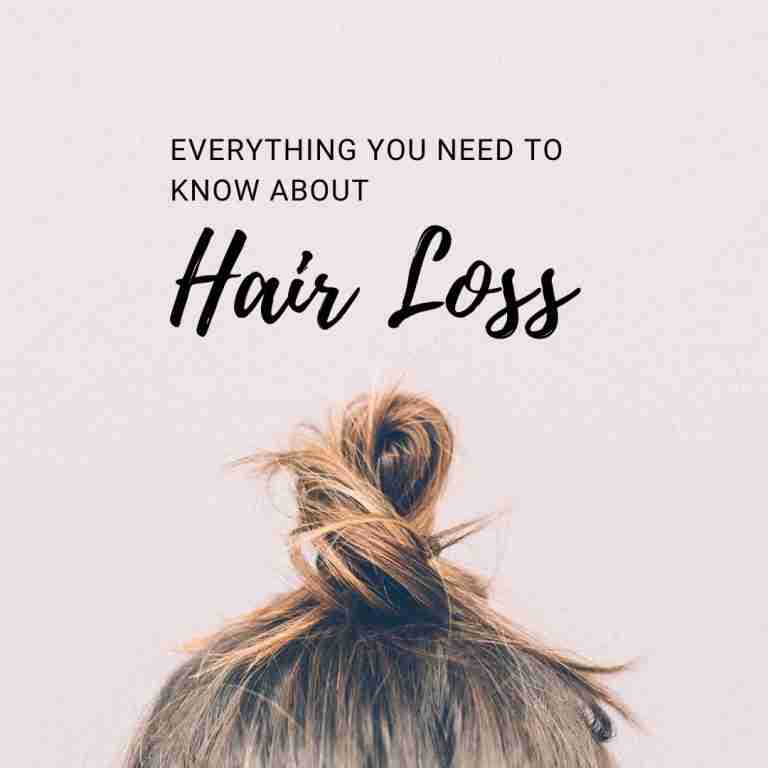What is ageism? Impact on women and what we can do
My friend told me the other day that she feels invisible ever since she turned 40 something. She said when she walks into a crowded room, she feels like she melts into the ground.
This common feeling is an issue in American society for women. Let’s learn more about ageism, how it manifests, and how to combat it.
You know, it’s not uncommon at all for women over 50 to grapple with a rather peculiar sensation – one we can call “the cloak of invisibility.” This intricate emotional state isn’t just some random occurrence; it’s a complex interplay of societal norms, cultural expectations, and deeply personal experiences that can often leave us feeling as though we’re gradually fading into the background.
Let’s unravel this phenomenon a bit further, shall we?

Breaking the Silence: Women and the Invisibility of Ageism
One of the most significant culprits in this phenomenon is society’s relentless obsession with youth and physical beauty. As the years roll on, it’s all too easy to feel like we’re falling short of these narrowly defined standards of beauty.
And that, my friends, can pave the way for the belief that we’re no longer seen or valued in the same radiant light as we once were.
But wait, there’s more to the story. Society has a knack for associating older women with diminished sexuality or romantic desirability. Those pesky stereotypes love to linger, whispering that we’ve somehow become irrelevant in the grand dance of romantic relationships. It’s disheartening, to say the least.
Now, remember, not every woman over 40 experiences these feelings of invisibility, but let’s face it, many of us do. The journey to addressing and overcoming these emotions is like nurturing a precious garden of self-love. It involves cultivating a positive self-image, seeking out communities that lift us up, and advocating for more inclusive representations of older women in our society.

So, my dear friends, in this article, we’ll take a deep dive into the murky waters of ageism.
We’ll explore how we can flip the script on the aging process, ditch those negative attitudes, and embrace the passing of time as a cause for celebration, not shame. Because, in the grand tapestry of life, every stage deserves to shine brilliantly, including the one where we find ourselves now.
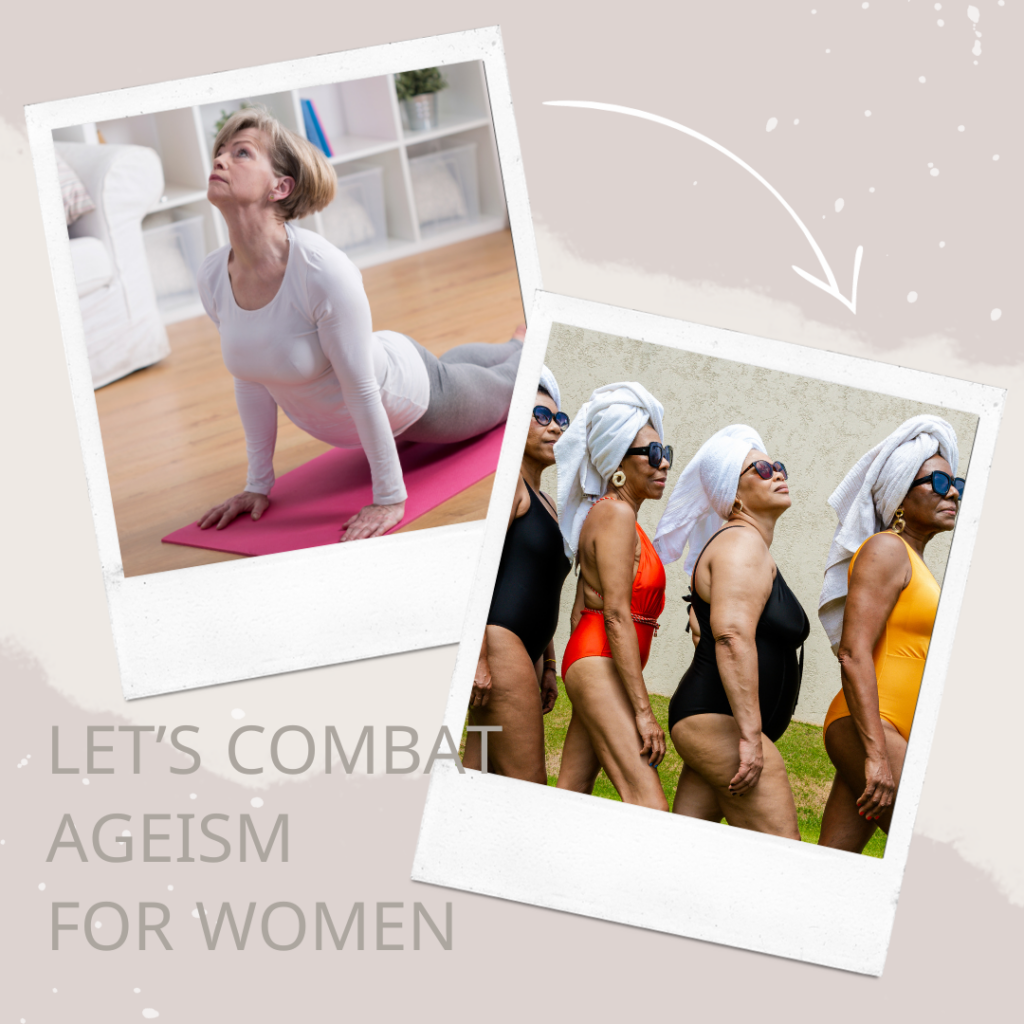
What Is Ageism ?
The definition of ageism is when unfair stereotypes and discrimination are based on age. It’s another form of discrimination. It can affect both young people and older adults. But in our culture, youth tends to be glorified, so older adults often face more age-related discrimination. It’s a mindset that we can work on changing.
It starts early, even in childhood, when we begin to believe that aging is negative and that older adults can’t take care of themselves.
While ageism may be seen as more acceptable than racism or sexism, it’s a problem that can’t be solved overnight. But don’t ignore it; you can take steps to address and challenge ageism. If we change our thought process about aging, we can not only improve our own well-being but also contribute to a more open-minded culture with fewer stereotypes and less discrimination.
We will focus more on ageism and women in particular.
“I do think that when it comes to aging, we’re held to a different standard than men. Some guy said to me: ‘Don’t you think you’re too old to sing rock n’ roll?’ I said: ‘You’d better check with Mick Jagger’.” — Cher
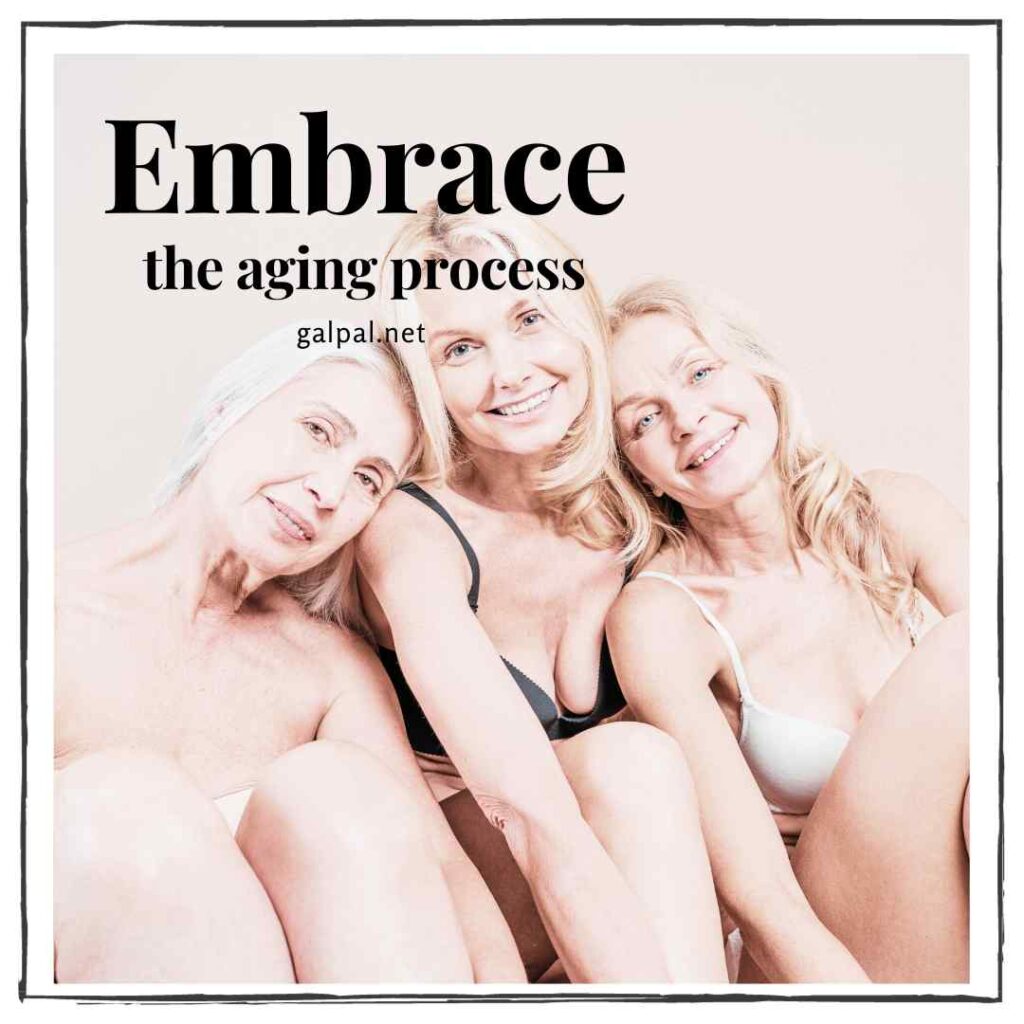
Let’s Look At Ageism In Our Society
In this article, we focus on ageism against older women and the crucial need to change mindsets. Negative stereotypes, discriminatory practices, and ageist attitudes harm not only the mental health of older women but also perpetuate a cycle of bias. It’s time to challenge these misconceptions and promote a society where people of all ages are valued equally.
Understanding Ageism and Its Impact On Women
Ageism affects women of all ages, leading to “Gendered Ageism” with distinct consequences at different life stages. There are different types of ageism. Below see examples of ageism against women.
Common Ageism Stereotypes- The signs
- Older persons are often unfairly characterized as forgetful, slow, or technologically challenged.
- Negative age stereotypes can manifest as jokes about “senior moments” or making fun of gray hair.
- Ageism against Older Women:Older people, especially women, often face devaluation and exclusion from leadership roles. They are seen as outdated, leading to their voices being discounted.
- Women between 40 and 60 face discrimination based on family and aging concerns. Some are deemed unsuitable due to perceived family responsibilities or menopause-related issues. These biases persist, while similarly aged men are not held to the same standards.
- Ageism against Young Women:Younger women, particularly those who appear youthful, experience condescension, role misconceptions, and credibility challenges. Young people, especially females, are often mistaken for lower-ranking positions and must work harder to establish their expertise. Their appearance is sometimes scrutinized over their professional abilities.
- Workplace Discrimination
- Hiring and Promotion Bias: Older women may face biases during the hiring process or when seeking promotions. Employers may perceive them as less adaptable or less open to new technologies, which can limit their career advancement opportunities.
- Salary Disparities: Older women might experience wage disparities compared to their younger counterparts. This wage gap can result from stereotypes that older employees are less productive or less committed, leading to lower salary offers.
- Reduced Opportunities for Training and Development: Employers may be less inclined to invest in training and development for older female employees, assuming they have fewer years left in their careers. This can hinder their professional growth and skill development.
- Glass Ceiling: Ageism can contribute to the “gray ceiling,” a term used to describe the barrier older employees, particularly women, face when trying to reach executive or leadership positions. Younger employees may be perceived as more suitable for such roles.
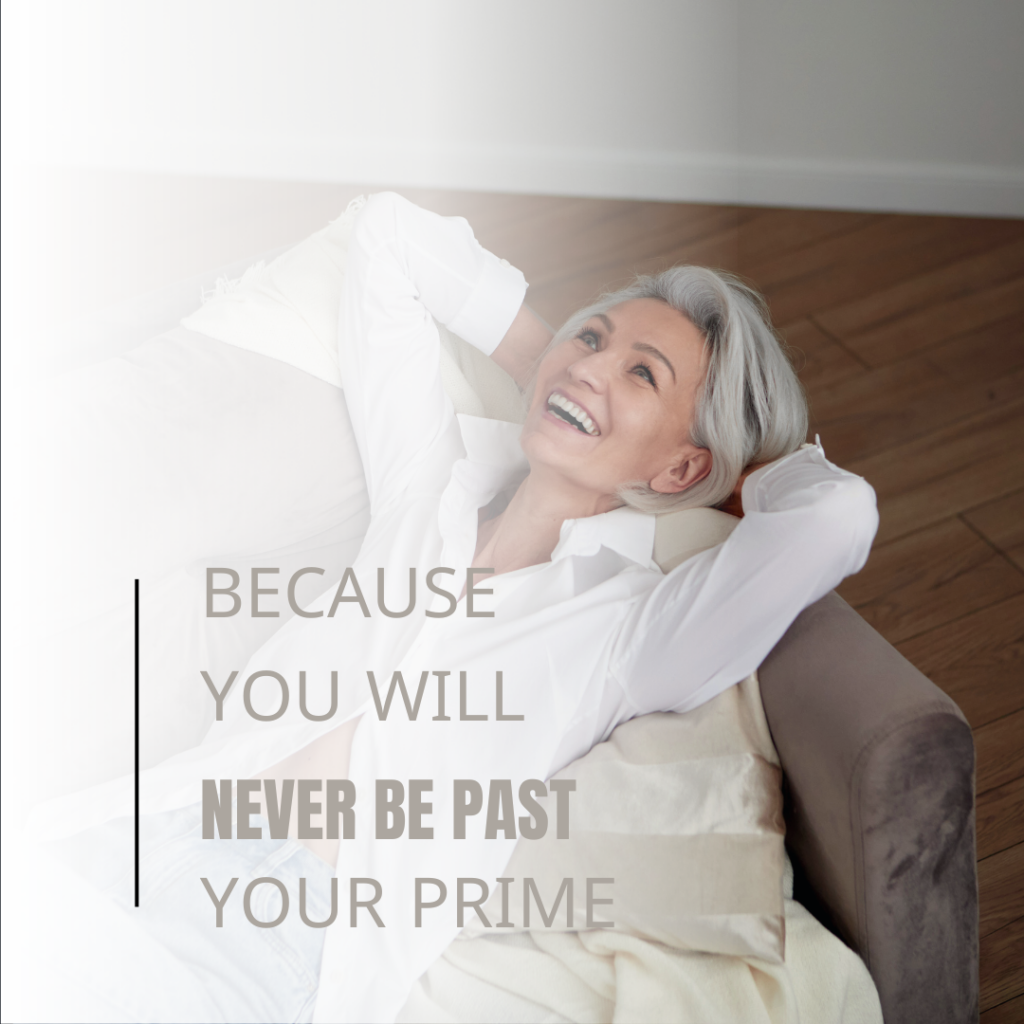
The Negative Result Of Ageism & Women
Ageism is a constant hurdle for women in the workforce and in everyday life.
Ageism has detrimental effects on mental health, including increased risk of depression, anxiety, and suicidal thoughts among older individuals. Discriminatory practices in employment can limit the opportunities for older workers and contribute to financial insecurity.
If we believe we are “old” we will be “old” and die much earlier than those who don’t think that way.
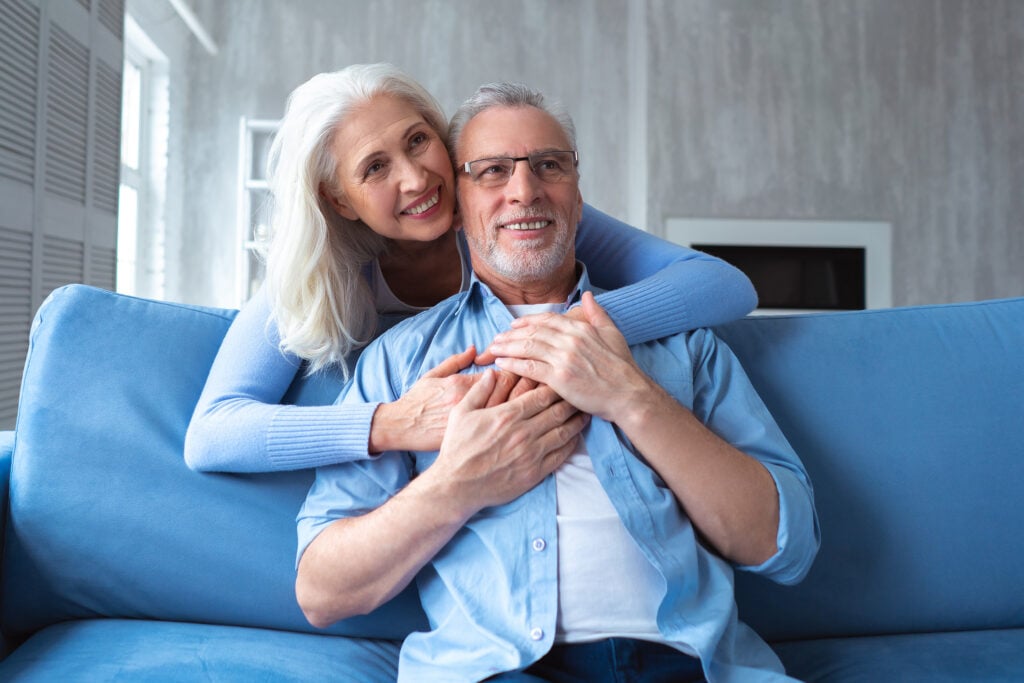
Ageism – Men Vs. Women
Men don’t feel the same societal pressure of looking old as women do. Men are perceived in a much better light as they age than women. Society tends to view aging differently for men and women.
In many cultures, men are often seen as more distinguished and authoritative as they age. Women on the other hand are more likely to face negative aging stereotypes. This difference in perception can lead to varying experiences of invisibility.
Often, the media portrays older men as retaining their power, relevance, and desirability as they age, reinforcing the notion that they can remain visible and valuable throughout their lives. The portrayal of older women in these positive roles is less frequent.
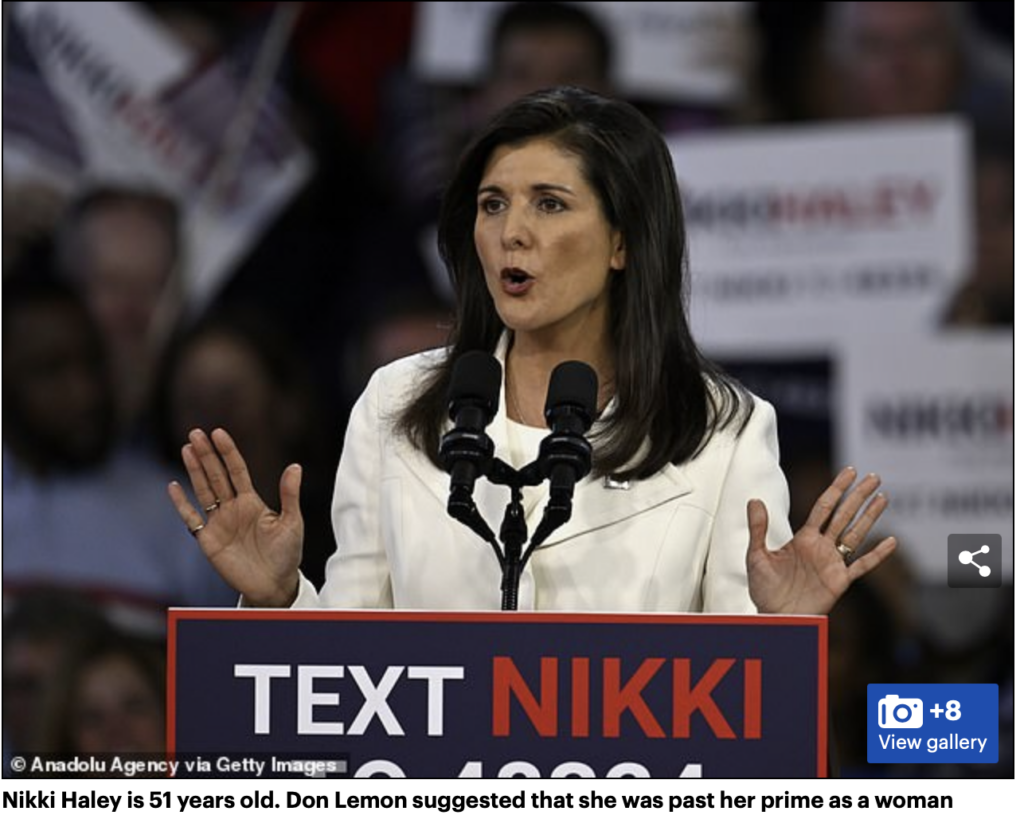
Ageism In Media With Women
The media and advertising industries are often guilty of sidelining older women. In a world where youth is predominantly celebrated, older women often find themselves underrepresented or, worse, misrepresented.
The media’s portrayal of age can shape societal attitudes and contribute to ageist beliefs. When older individuals are consistently portrayed as irrelevant or incapable, it can lead to marginalization and discrimination in various aspects of life.
There have been efforts to challenge ageism in media, with some television shows, movies, and advertising campaigns featuring older characters in nuanced and positive ways. These efforts can help combat stereotypes and foster more inclusive representations.
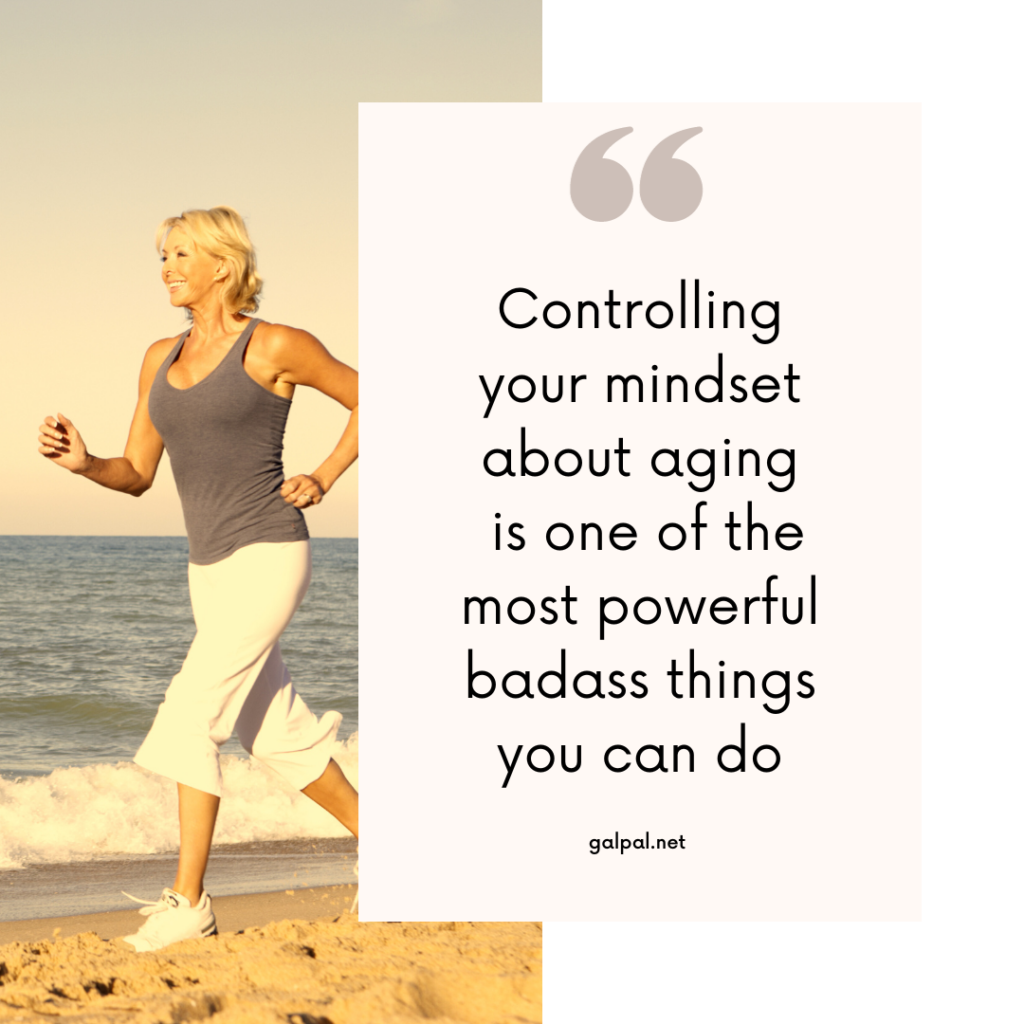
Let’s Be Clear- No Woman Is Past Her Prime
Don’t let anyone ever tell you that you are past your prime. Let’s not forget the example of this in Don Lemon’s comment live on air. In a glaring instance of ageism in America, the comment, “past her prime,” takes center stage. During a televised discussion, Lemon made a statement that left all women visibly pissed off. He remarked, “Nikki Haley isn’t in her prime — sorry,” Really?
“Women are considered to be in her prime during her 20s,30s and perhaps her 40s”
Don Lemon
Don Lemon went on to assert that a woman are considered to be in her prime during her 20s, 30s, and perhaps her 40s. Poppy Harlow (CNN anchor), reacted with total disgust. She couldn’t believe the words that came out of Lemon’s mouth. Harlow, the voice of reason, posed a pointed question: “Prime for what?” It was a question that deserved careful consideration.
At that pivotal moment, Lemon faced two distinct choices while the cameras rolled. He could have recognized the palpable discomfort in the studio, acknowledged the blatantly sexist nature of his comment, and chosen to backtrack. He had the opportunity to clear the air but he didn’t.
The Discrimination Of Ageism
Lemon went on to and stated, “Don’t shoot the messenger. I’m just stating what the facts are.”What ? Are you kidding I thought? These biological and chronological “facts” apparently exist online, as Lemon encouraged viewers to Google “When is a woman in her prime?” How To Stop The Ageism Narrative
Let’s face it, ageism creeps into our lives as we get older. We encounter stereotypes and misconceptions about aging women, perpetuating the notion that we’re less relevant, less capable, or less attractive. It’s as though our wisdom and life experiences are eclipsed by these pervasive stereotypes, and it’s disheartening to realize that people may view us through this distorted lens.
How To Stop The Negative Narrative About Age
Why is it important to stop the ageism narrative? Because age related stereotypes can make a significant impact on how we perceive people and how we perceive ourselves. For instance, if we treat someone as “old,” their brain can respond by slowing down, causing them to act differently than they naturally would.
This mantra not only impacts others, but if we think of ourselves as “old” we start looking and acting “old” and may not even realize it. Have you ever caught yourself thinking negatively about your age and how it dictates your behavior? Perhaps you’ve apologized for a “senior moment.” These negative age beliefs have proven to affect our health and longevity.
Hey, my mother is a perfect example of someone who refuses to buy into the fact she should act or feel 89 years old. Her physical health is that of a 70-year-old and her mind is as young as it could be. So why on earth should she start to act older? Healthy aging doesn’t mean.
Age is just a number- Don’t dwell on it
After turning 40, I realized that chronological age doesn’t matter, which explains why I don’t like focusing on the years. What matters most to me is how you feel. My grandmother always told me she felt like a 40-year-old trapped in a 70-year-old body. I never understood that until later in life.
Research suggests that distancing yourself from your age can be helpful. Think of age as just a number and pay attention to how you truly feel. Chances are, you don’t fully identify with the stereotypes associated with your age.
It’s crucial to recognize that ageism is not an imaginary stereotype; it’s a very real issue for those who experience it firsthand. Society needs to acknowledge its existence and hold companies, healthcare professionals, and individuals accountable for any ageism they exhibit through words or actions.
Embrace A Positive Self-Image
Embracing a positive self-image and self-confidence is crucial for overall well-being. Believing that you are “old” can erode your self-esteem and hinder your ability to pursue new opportunities or challenges.
Ashton Applewhite’s trailblazing book, This Chair Rocks: A Manifesto Against Ageism, was listed as one of the “100 Best Books to Read at Every Age” by the Washington Post and named by Forbes As one of “10 Books To Help You Foster a More Diverse and Inclusive Workplace.” This Chair Rocks explores the roots of ageism and how it divides us, examines how ageist stereotypes affect our bodies and minds, and lays out a road map for what an all-age-friendly world could look like.
Changing The Aging Mindset: A Collective Effort
The aging mindset, often referred to as the attitude or perception one holds toward aging, can indeed have a significant impact on how long an individual lives.
The good news is that if you and I can change our mindset towards aging and embrace it, we may live longer.
25% of our health is due to genes. That means three-quarters of our health is determined by environmental factors, many of which we can control, including age beliefs. With that said, we need to change how we think of aging.
Becca Levy – “Breaking the Age Code: How Your Beliefs About Aging Determine How Long & Well You Live” by Becca Levy
What We Know About Ageism and Longevity
In Japan old age is treated as a time to enjoy rather than to fear and she started to wonder how culture impacts aging. In America, we don’t see it that way. It’s time to change these beliefs.
Cultural Factors in Japan:
- Japan has a strong cultural emphasis on respect for elders. This societal respect fosters a positive view of aging.
- Japanese culture encourages intergenerational relationships, which provide emotional support and a sense of belonging for older individuals. Spending time with family members is important,
- The traditional Japanese diet, which includes fish, rice, vegetables, and green tea, is associated with health benefits and longevity. Good health is a priority in Japan.
- Old age is a positive stereotype in Japan.
“Some people are old when they’re 18 and some people are young when they’re 90. You can’t define people by whatever society determines as their age. Time is a concept that human beings created.”
Yoko Ono
Positive Aging Mindset- How It Helps Our Longevity and Health
People who maintain a positive attitude toward aging tend to engage in healthier behaviors. They are more likely to exercise regularly, eat a balanced diet, and prioritize preventive healthcare measures. If you feel young, you will act young.
A positive mindset can reduce stress and contribute to better mental health, which, in turn, can have a positive impact on physical health and longevity. When individuals embrace aging as a natural part of life and maintain a sense of purpose and social engagement, they often experience enhanced overall well-being.
How To Live Your Best Life Despite Age Stereotypes
Social Support Networks:
- Cultures that prioritize close-knit family and community ties tend to provide strong social support for older adults. This support network can reduce feelings of loneliness and isolation, contributing to better mental and physical health.
- In Japan, the concept of “ikigai,” which translates to “a reason for being,” encourages individuals to find purpose and fulfillment throughout their lives, including in old age.
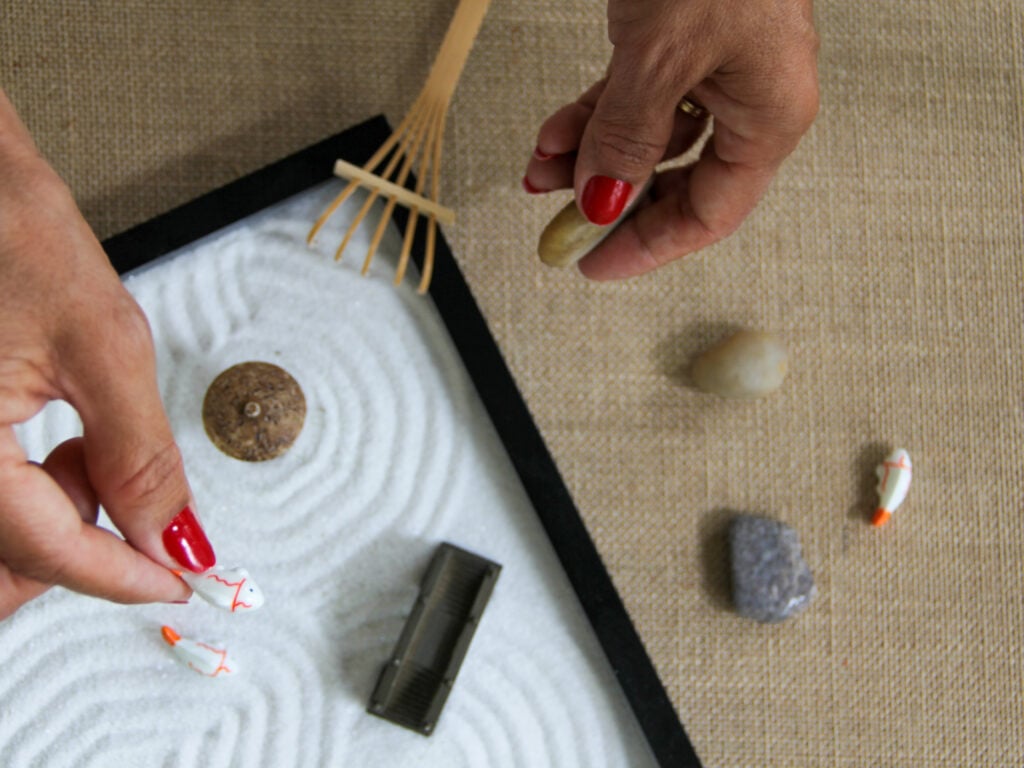
Stress Reduction
- Cultures that place a lower emphasis on competition and stress and prioritize relaxation and balance tend to have lower levels of stress-related illnesses, which can contribute to longevity.
- Practices such as meditation and mindfulness, which are common in some cultures, have been associated with reduced stress and improved overall health.
Healthcare Access and Quality
- Access to high-quality healthcare and preventive services can also play a crucial role in extending life expectancy. In countries like Japan, where universal healthcare is accessible, older individuals can receive necessary medical care and screenings.
Diet and Lifestyle
- Eat a diet from one of the famous Blue Zones where people live to be 100.
- Traditional Japanese diets are often rich in foods that are associated with health benefits, including fresh fish, tofu, vegetables, and green tea. Drinking less alcohol. These dietary choices can contribute to better health in old age.
Active Lifestyles:
- In cultures where older adults are encouraged to stay physically active and engage in activities such as walking, gardening, or tai chi, there can be a positive impact on physical health and longevity.
It’s essential to recognize that while the aging mindset and cultural factors can play a significant role in longevity, they interact with various other factors, including genetics, healthcare systems, and socioeconomic conditions.
Nonetheless, the emphasis on maintaining a positive view of aging, staying socially engaged, and adopting healthy lifestyles are all elements that contribute to longer and healthier lives, as often observed in Japan and other societies with similar cultural values and practices.

What Can We Do To Combat Ageism
Recognizing Ageist Beliefs
- Raising public awareness about ageism and its consequences is the first step towards change.
- Acknowledging that ageism can affect people of all ages, including younger adults.
Promoting Positive Stereotypes
- Emphasizing the wisdom, experience, and contributions of older women.
- Challenging the notion that aging equates to decline.
Encouraging Equal Employment Opportunities
- Highlighting the importance of the Age Discrimination in Employment Act in combating age discrimination in the workplace.
- Encouraging businesses to value the skills and experience of older employees.
Age-Friendly Universities
- Institutions like the Age-Friendly University initiative focus on creating age-inclusive learning environments.
- Promoting lifelong learning opportunities for people of different ages.
Media’s Role
- Media outlets should strive to portray older women in diverse and positive ways.
- Younger people can be instrumental in advocating for age-inclusive media representation.
Positive Impact on Mental Health
- Creating a society free from ageist attitudes can lead to better mental health outcomes for older women and people of all ages.
- Challenging ageism can improve interpersonal relationships and foster a sense of belonging.
“In America, childhood is romanticized, youth is idolized, middle age does the work, wields the power and pays the bills, and old age, its days empty of purpose, gets little or nothing of what it has already done.
– Robert Butler- Butler, a 1953 graduate of the Vagelos College of Physicians and Surgeons, outlined the state of human aging in his Pulitzer-prize winning book, “Why Survive? Being Old in America(link is external and opens in a new window),” in 1975.
Conclusion
Ageism is a deeply ingrained issue in American culture and around the world, but it is not insurmountable. By challenging ageist beliefs, promoting positive stereotypes, and encouraging equal opportunities for older individuals, we can create a more age-inclusive society. It’s crucial to remember that ageism affects people of all ages and that changing mindsets is a collective effort. Let’s work together to break down the barriers of ageism and promote mental health and well-being for everyone, regardless of their age.

